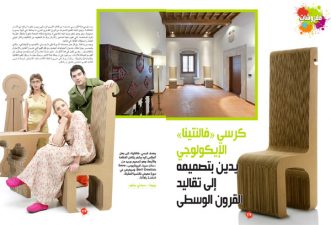 A starchitect from Japan? As Israel’s oldest and leading arts academy, shouldn’t Bezalel be a locavore when it comes to hiring architects?
A starchitect from Japan? As Israel’s oldest and leading arts academy, shouldn’t Bezalel be a locavore when it comes to hiring architects?
The Bezalel Academy of Arts and Design, established in Jerusalem in 1906 as an institution that would help form a new visual language for the Jewish people, is now synonymous with Israeli art. (In the green world it has helped create many eco-minded designers, such as Michael Tsinovsky, the maker of melting pot styled furniture, Galit Begas, the creator of the plastic bag shoe, and ocean debris sculpture maker, Koby Sibony.) Yet recently, when Bezalel made the progressive decision to move the campus back to Jerusalem’s city center (thereby making it more accessible), it also made the bizarre decision to hire a foreign team of architects for the project. In other words, it chose not to ‘go local’.
It chose, instead, to hire the Tokyo-based architecture firm Kazuyo Sejima and Ryue Nishizawa and Associates (aka SANAA), who will be collaborating somewhat with Nir-Kutz Architects of Tel Aviv.
The decision has been met by controversy among those who feel that Bezalel should have shopped local, and selected an entirely Israeli architectural team to design this significant building.
(From an environmental perspective, local is almost always the best way to go too. If one were to make an environmental analogy here, it is as if Bezalel decided to build its campus out of imported Japanese cherries that heavily polluted the atmosphere en route to Israel rather than locally grown cactus fruit.)
“The very act of deliberating between an Israeli firm and a ‘starchitect’ for an institution like Bezalel is almost absurd,” Israeli architect Mayslits Kassif said, “considering the school’s vision of establishing a creative and significant cadre of [local] leaders.”
Kassif is not wrong. When Professor Boris Shatz established the Bezalel Academy in 1906 he stated that his mission was:
“to train people in Jerusalem in crafts, consolidate original Jewish art and support Jewish artists, and to find visual expression for the much yearned national and spiritual independence that seeks to create a synthesis between European artistic traditions and the Jewish design tradition of Eastern Europe, and to integrate it with the local culture of the Land of Israel.”
Professor Arnon Zuckerman, the current president of Bezalel, rejects these claims and asked, “are we to apologize for picking one of the best firms in the world for a unique project? This is a complex that gets built once in a century – and as president I must arrange for the best possible solution for Bezalel.”
: Haaretz
: Bezalel Academy of Arts and Design
Read about green architecture in the Middle East::
Tel Aviv’s $60 Million Eco-Office Tower A Go
Syria’s Beehive-Shaped Green Architecture
Sustainable Architecture Conference in Libya is Looking for Participants
Image via: zeevveez




The most famous Israeli architect doesn’t even live in Israel anymore –– Moshe Safdie –– and he’s too prevalent in Israel anyway. If a local can’t design a stunning building, then I see no reason why foreigners from our global village can’t be hired. This is democracy and ideals or politics shouldn’t be the biggest weighing in factor when hiring an architect, I feel.